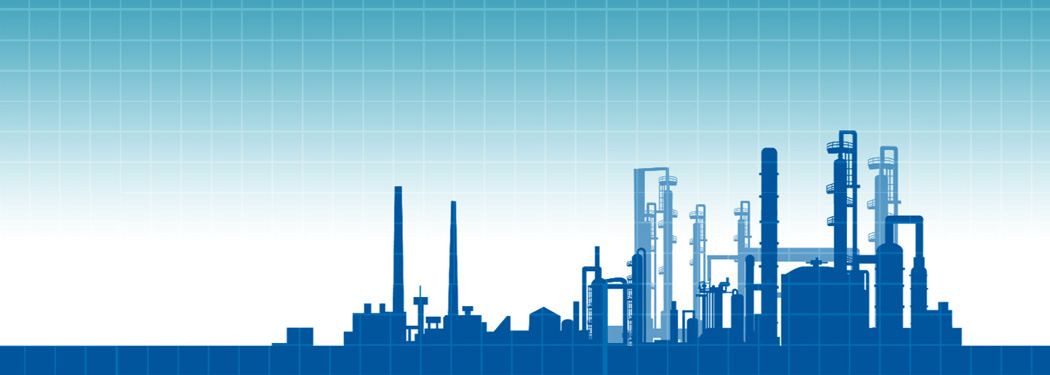Glossary

A
- Abatement cost (€/t CO2):
The abatement cost enables the comparison of the cost of different options to reduce emissions by one tonne of CO2. It is determined partly by the CAPEX (investment) and fixed OPEX required to implement a particular option
- Aerosol:
A suspension of fine solid particles or liquid droplets, in air or another gas
- Amines:
Derivatives of ammonia used as solvents in the post combustion CO2 capture process to absorb CO2 from the flue gas stream
- Atmosphere:
The layer of gases surrounding the earth; the gases are mainly nitrogen (78%) and oxygen (around 21%)
- Atmospheric carbon dioxide:
The quantity of CO2 present in the atmosphere
C
- CAPEX:
Capital expenditure
- Capture efficiency:
The fraction of CO2 separated from the gas stream of a source
- Carbon capture:
The removal of CO2 from a process stream or from the atmosphere to produce a highly pure stream of CO2 amenable for conversion or storage
- Carbon dioxide (CO2):
A colourless, odourless gas formed by carbon and oxygen to be found in the atmosphere and underground
- Carbon storage:
A process for retaining captured CO2 so that it does not reach the atmosphere
- Carbon transport:
The process of moving captured CO2 through a pipeline, or by other means, e.g. road, rail or shipping, from its source to a suitable storage site
- Carbon utilisation:
A range of technologies that use or convert captured CO2 to make valuable fuels, feedstocks, chemicals, building materials or other products
- CCLU:
CO2 compression and liquefaction unit
- CCS:
Carbon Capture and Storage
- CCS-RI:
CCS readiness index
- CCUS:
Carbon Capture Utilisation and Storage
- Climate:
The long-term average of weather in a region, typically averaged over a period of 30 years
- Climate change:
A change of climate which is attributed directly or indirectly to human activity that alters the composition of the global atmosphere and which is in addition to natural climate variability observed over comparable time periods
- Climate change mitigation:
Any actions taken to limit the magnitude or rate of long-term global warming and its related effects
- CO2 capture technologies:
Any technology designed to either remove CO2 from the atmosphere or to prevent the release of CO2 generated through power generation and industrial processes
- CO2 emissions:
The release of CO2 into the atmosphere over a specified area and period of time
- CO2 equivalent (CO2e):
A measure used to compare the emissions from various greenhouse gases on the basis of their global-warming potential (GWP), by converting amounts of other gases to the equivalent amount of CO2 with the same global warming potential
- CO2-EOR:
Carbon dioxide enhanced oil recovery
- Combustion impurities:
Unwanted chemicals contained within the combustion gas as a result of contaminated fuel, e.g. sulphur
D
- Decarbonisation:
The removal of or reduction in the carbon intensity of a process or an entire economy
- DORA:
Dissolved oxygen removal technology tested in REALISE. DORA is designed to remove dissolved oxygen from liquid CO2 capture solvents
E
- EC:
European Commission
- EOR:
Enhanced oil recovery
- EPE:
Education and public engagement
- EU:
European Union
F
- FCC:
Fluid catalytic cracking, one of the most important conversion processes used at refineries. It is a chemical process that uses a catalyst to break down petroleum crude oils into petrol and other products
- Flue gas:
The gas that exits via a flue, which is a pipe or channel for gases from a fireplace, oven, furnace, boiler or steam generator. It often refers to the combustion exhaust gas produced at power plants
- Fossil fuel:
Buried combustible geologic deposits of organic materials, formed from decayed plants and animals that have been converted to crude oil, coal, natural gas, or heavy oils by exposure to heat and pressure in the Earth’s crust over hundreds of millions of years
G
- Geological storage:
Injection of CO2 into suitable deep rock formations where it can remain stored
- Gigatonne (Gt):
109 tonnes, billion tonnes
- Global warming:
The increase in the average temperature of the Earth’s near-surface air and oceans since the mid-20th century and its projected continuation
- Greenhouse effect:
A naturally occurring process that aids in heating the Earth's surface and atmosphere. It results from the fact that certain atmospheric gases, such as CO2, water vapour, and methane, are able to absorb longwave radiation emitted from the Earth's surface
- Greenhouse gas (GHG):
A gas that contributes to the greenhouse effect by absorbing infrared radiation, e.g. carbon dioxide (CO2), methane (CH4), nitrous oxide (N2O), hydrofluorocarbons (HFCs)
H
- HS-3:
short name of the solvent used in REALISE
I
- IEAGHG:
International Energy Agency Greenhouse Gas Research and Development Programme
- IRIS:
Iron removal integrated system. By removing iron from the solvent, degradation is lowered, as are the environmental impacts and the costs of CO2 capture
M
- MEA:
Monoethanolamine. Aqueous monoethanolamine has been used as benchmark solvent in CO2 capture systems due to its fast absorption kinetics, high cyclic capacity and low cost
- Megatonne (Mt) :
106 tonnes, million tonnes
- Membrane:
In CCS, thin sheets of material that can separate CO2 from other gases acting like a sieve
- Minipilot:
A mobile CO2 capture test unit used in REALISE
- Mission Innovation (MI):
A global initiative working to accelerate clean energy innovation, http://mission-innovation.net/
N
- Negative emissions:
The permanent removal of CO2 from Earth’s atmosphere
- Net efficiency:
The ratio of energy input to useful energy output
- NMPC:
Nonlinear model predictive control
- NO:
Nitric oxide
- NO2:
Nitrogen dioxide
- NOx:
Sum of NO and NO2
O
- O&G:
Oil and gas
- OPEX:
Operating expenditure
P
- Pilot:
A pilot study, project, test or experiment is a small scale preliminary study conducted in order to evaluate feasibility, duration, cost, adverse events, and improve upon the study design prior to performance of a full-scale test
- Post-combustion capture:
Separating CO2 from other waste gases after a fuel is burned
- Pre-combustion capture:
The removal of CO2 from fuels prior to a fuel being burned
- Projects of Common Interest (PCI):
key cross-border infrastructure projects that link the energy systems of EU countries. Intended to help the EU achieve its energy policy and climate goals, they benefit from accelerated planning and finance
R
- Refinery:
A production facility converting raw material into products of value. Oil refineries convert crude oil into product oils like gasoline
- Retrofit:
A modification of existing equipment to upgrade and incorporate changes after the initial installation. In CCS, this might be retrofitting a power station for CO2 capture, or retrofitting an oil platform for CO2 injection
S
- Sector coupling:
integrating energy consumers with power producers
- SO2:
Sulphur dioxide
- SOA:
State-of-the-art
- Solvent:
In CCS, a liquid that can absorb CO2
- SOx:
Oxides of sulphur
- Steam Methane Reforming:
a method for producing syngas (hydrogen and carbon monoxide) by reaction of hydrocarbons with water. Natural gas is usually the feedstock. The main purpose of this technology is hydrogen production
T
- Technology Readiness Level (TRL):
A type of measurement system used to assess the maturity level of a particular technology. Each technology project is evaluated against the parameters for each technology level and is then assigned a TRL rating based on the project’s progress. There are nine technology readiness levels. TRL 1 is the lowest and TRL 9 is the highest
- Tiller pilot:
SINTEF CO2 capture pilot plant located in Trondheim, Norway
W
- Work Package (WP):
Units of related tasks which are used to break projects up into smaller chunks

